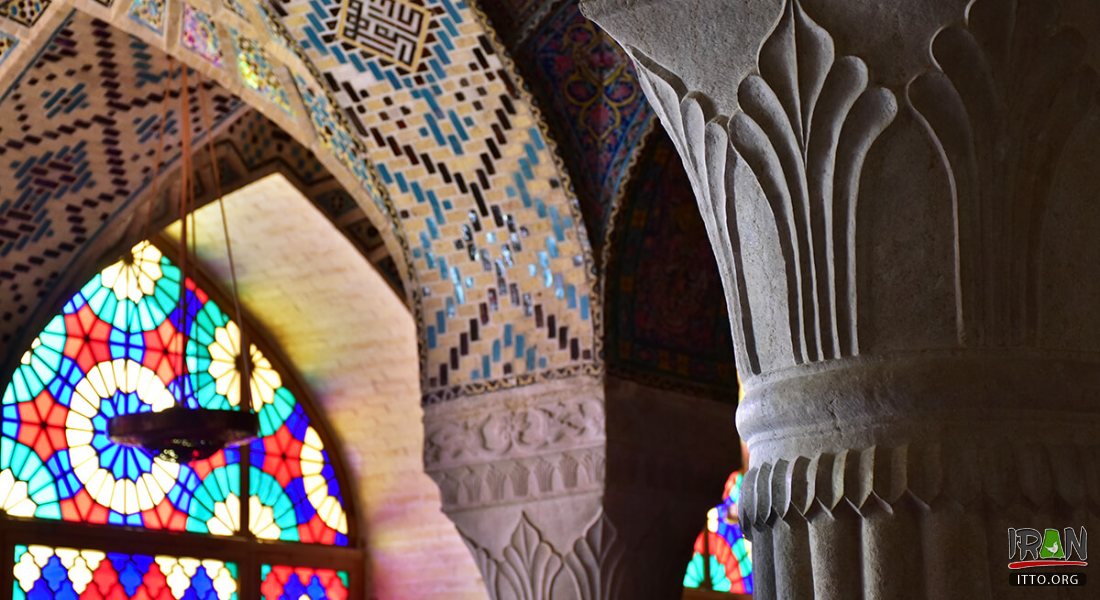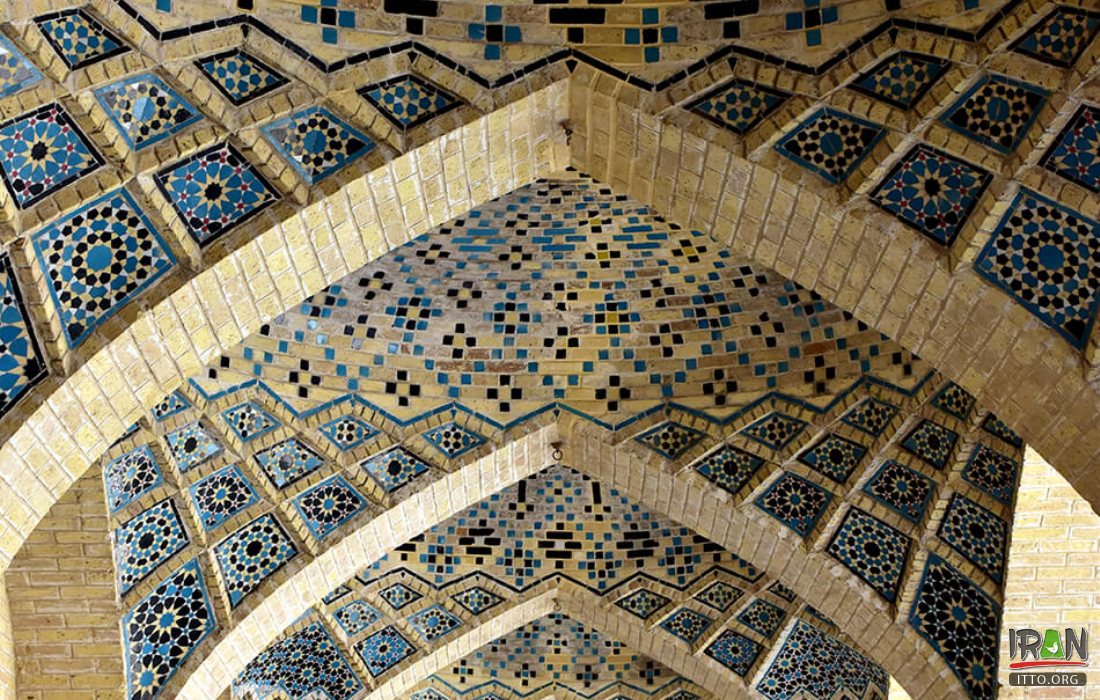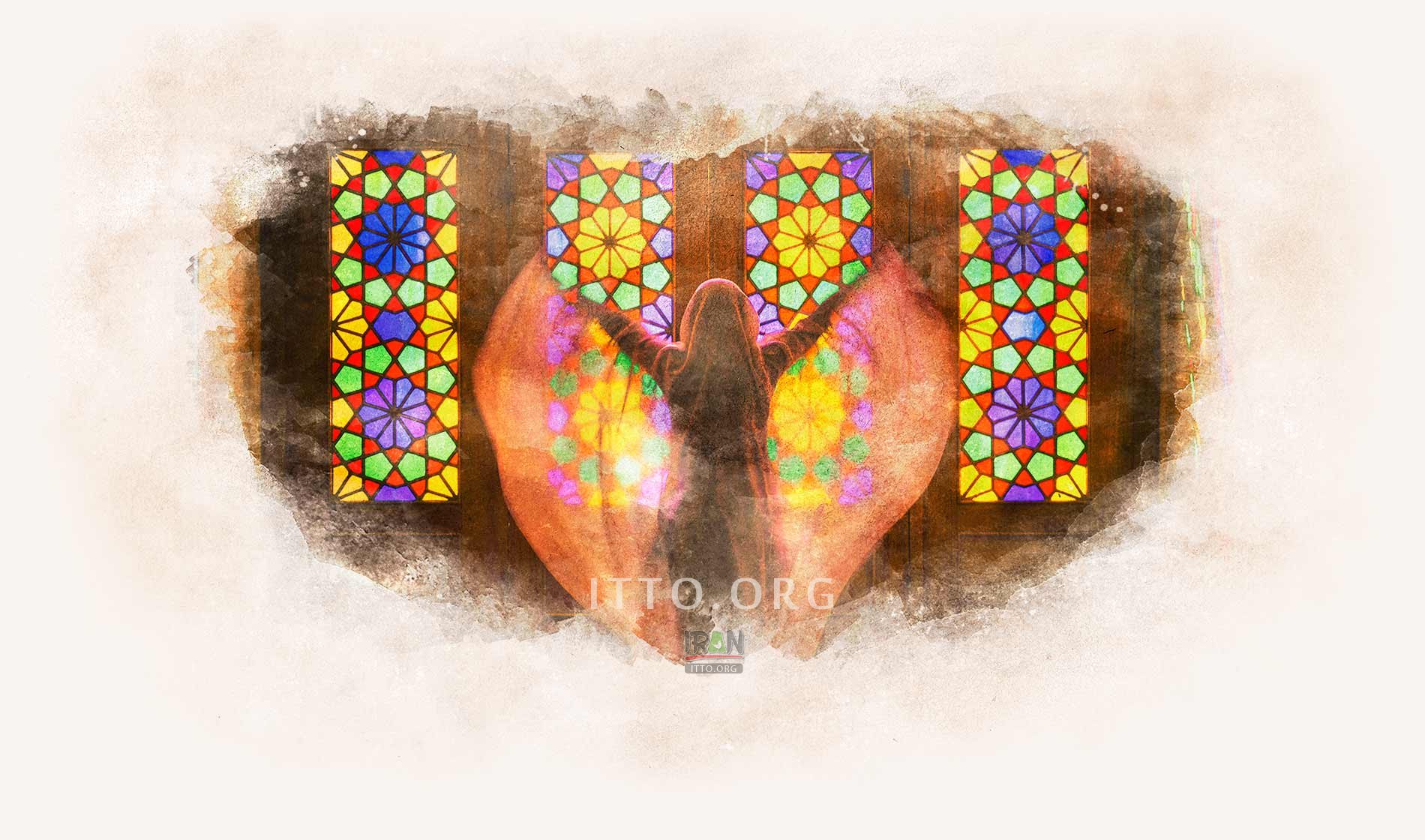Nasir al-Mulk Mosque or Pink Mosque is one of the architectural buildings of the Qajar period (1789-1925). It was built by the order of Mirza Hassan Ali Khan Nasir al-Mulk, the son of the rulers of Persia in the Qajar period. The area of Nasir al-Mulk Mosque is 2980 square meters. Nasir al-Mulk Mosque amazes visitors from the moment they enter with its dazzling tiling.
The glorious door of the facade has been made of wood. Above it, there is an inscription on the pieces of marble stone of a poem. Nasir al-Mulk Mosque enjoys two Shabestans (underground space that can be usually found in the traditional architecture of mosques), on the west and east side. In fact, the methods used in the decoration of the western
Shabestan is the main reason for the population and reputation of this stunning attraction. The masonry and decoration of this Shabestans is inspired by the
Vakil Mosque in Shiraz.
The inner part consists of a series of arches and vaults as well as two rows of six columns which divide the interior of the western
Shabestan into smaller sections. This Shabestan is connected to the beautiful courtyard of the mosque by seven wooden gates. All of these doors are decorated with the art of Gereh Chini (Trelliswork) and Orsi (pieces of colored glass).

The masonry and decoration of this Shabestans is inspired by the Vakil Mosque in Shiraz
The beam of sunlight and the passage of light through colored glass by combining red, azure, yellow, orange, and green colors create the indescribable image in the interior of this Shabestan. This image blends with the brilliant art of stone carving, the magnificent art of colorful Qajar tiling and arches, lead to creating a dreamy atmosphere of Nasir al-Molk Mosque in
Shiraz. This space is considered the summer Shabestan and the eastern Shabestan was dedicated to a winter space of the mosque.
Orosi (Orsi) or stained glass is mostly popular in churches nowadays, the earliest discovered was in Syria from the 7th century. Orsi windows are windows made of a mixture of wood and colorful glass in the Safavid and the Qajar dynasties. Orsi differs from stained glass used in many churches and Ottoman mosques which serve as illuminated images rather than a source of light. Light is a major feature in many mosques considering it being a major symbol of God in Islam. This is mentioned in a chapter in Quran: ″
Allah is the light of the heavens and the earth″

A marvelous architecture in the city of Shiraz in Fars Province
There is a shallow and wide pool in the middle of the courtyard which is one of the most beautiful frames for photographing this beautiful building when the image of redfish in the heart of the blue pool and the reflection of wooden doors and colored glass in the water combines.
This Mosque is located in the God-e Araban district of
Shiraz City, south of Lotfali Khan Zand Street, next to the
Shah-Cheragh shrine.




